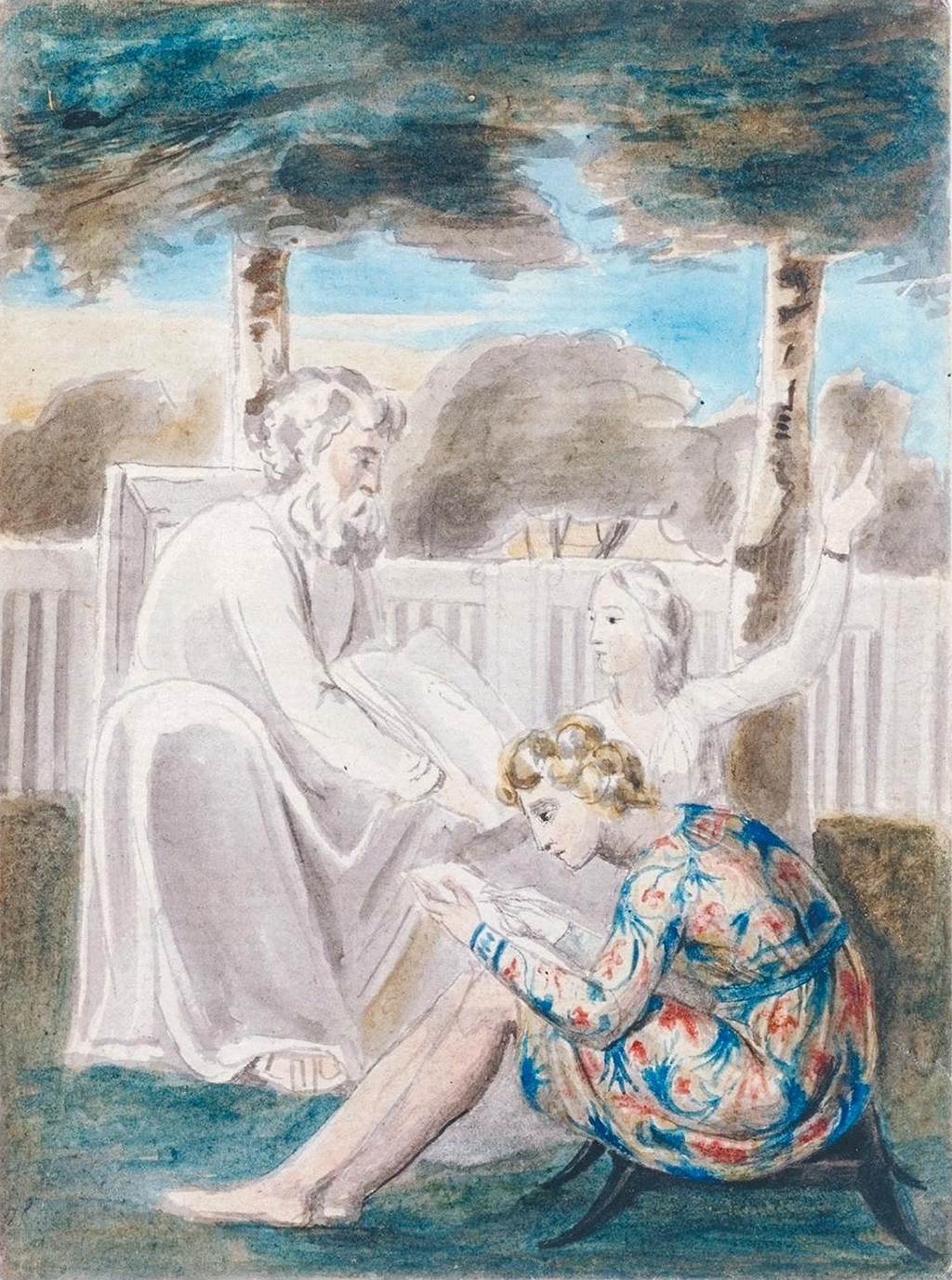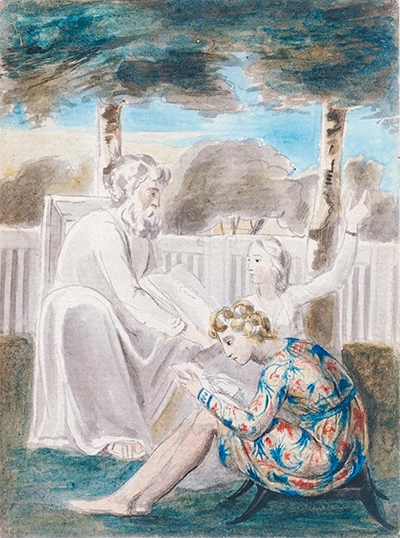Age Teaching Youth is another of Blake's impressive work with ink and watercolour on paper, with this piece dated to around c.1785–90. The piece is now under the ownership of the Tate in the UK which runs a number of important art galleries across the country.
The composition found here is fairly simple, with an elderly man helping two young girls in their studies. The girl nearest us is dressed in an elaborate outfit which features blue and pink detail as she diligently follows the texts in front of her. She is perched on a small stool and sits by herself in deep concentration. Another female sits behind, dressed entirely in which. Her left arm points to the sky and she recites verses from the book in front of her. The elderly men is similarly dressed entirely in white, and an expanse of light drapes over these two figures to increase this brightness. His white beard and hair helps to create the atmosphere of age, and therefore imply wisdom, though the rest of his features are actually of a much younger man. Behind the figures is a white wooden fence, suggesting their presence within a private garden. There is then a plethora of trees in the background which cover most of a bright blue sky.
Those studying Age Teaching Youth up close will be able to spot the original likes of pen which were added first in order to lay out the composition. For example, the dark grey trees in the distance have outlines still visible and this was not by accident. Most watercolour paintings have this finished look, where the opaque nature of watercolour can often mean that the filled shapes are not as dominant as you would find in the work of oil painters. This adds a more relaxed finish, and for some makes watercolour a perfect balance between traditional drawing and the medium of oil. Most of this artwork is fairly light and subtle, but strong tones are used across the ground and closest trees bushes, as well as in one of the girl's dresses. William Blake would make use of the image of children reading within a number of artworks, including the title page to Songs of Innocence.
Many have speculated about the meaning of each character within this scene, without any real firm conclusions ever have been drawn. The floral pattern upon the youth nearest us suggests that they might represent an affection for nature itself, where as the bearded, learned man may link to the theme of law. The figure pointing upwards may therefore be about the Divine, or even imagination as a direct contrast. Blake was a complex man whose use of symbolism and morality was common in his work but not always easy to decipher with confidence. Another important British artist from the 18th century who had a wealth of technical ability and fused it with great imagination and innovation was William Hogarth, an artist seen by many to have inspired the early use of satire within art, thanks to classic prints such as the likes of Beer Street and Gin Lane. This was a period in which British art was starting to become fairly influential within Europe for the first time.





